Physician Advising COM-Unity Program
Intro Heading link
The vision of the COM-Unity Advising structure is to create a sense of “belonging in medicine” for each student by fostering relationships that support students’ professional and personal development during medical school.
There are 8 COM-Unities which are named for famous UI College of Medicine Alumni and former faculty. Each COM-Unity has four houses, with each house comprised of students from a different entering class. There are two physician house advisors (PHAs) per COM-Unity. Our PHAs represent six different specialties; six PHAs are UI COM Alumni, and twelve did some portion of their training at UIC/UI Health.
The PHA works with the students in a longitudinal fashion, creating long-term meaningful relationships. In close collaboration with the Office of Student Affairs, the PHA performs three major functions: individually advising and coaching each student in their house, facilitating small groups for the curriculum, and checking in with the students in their house approximately monthly.
Goals of COM-Unity Programs Heading link
The goals of the COM-Unity programs are as follows:
- Students will be able to name a trusted physician faculty member at COM who can offer advice, coaching and support without any risk of effect on students’ grades or evaluations
- Students will learn to actively listen and effectively share information with peers in small groups, to enhance the knowledge, skills and attitudes of the group
- To show respect for divergent opinions
- To demonstrate cultural humility
- Students will practice self-reflection and self-assessment in order to:
- Identify and discuss strengths within medicine
- Identify areas for improvement within medicine and plan a path to this improvement
- Welcome feedback and incorporate it into daily practice
- Students will discuss areas of interest within medicine and plan a path to pursue these interests
Physician House Advising Faculty for: Heading link
-
Dr. Vidya Govind

Dr. Vidya Govind is a pediatrician in the clinics and inpatient settings at UI Health. Born, raised, and trained in the Chicagoland area, she has committed her career to underserved communities, and aims to provide empathetic and empowering care to all of her patients. Her clinical and academic interests include medical education, preventive care, mental health/improving outcomes for those who have experienced trauma, and addressing health disparities. She is also a professional dancer with Natya Dance Theatre (a Chicago-based company specializing in Bharatanatyam, a classical Indian art form), and enjoys pretending like the Bulls are serious Finals contenders each year.
-
Dr. Rachael King
Dr. Rachael King is an Assistant Professor in the Department of Medicine at UIC. She is originally from Florida, completing her undergraduate degree at the University of Florida (go Gators!) with a bachelors of science in psychology and a minor in anthropology. She completed medical school at the University of South Florida Morsani College of Medicine with a distinction in health disparities. Needing to leave the heat, she came to Chicago to complete her residency and chief year in internal medicine at UIC. She has an interest in underserved medicine, women’s health and recruitment of underrepresented minorities into medicine. She also has a love of cooking, traveling, and is a big fan of the Harry Potter book series.
-
Dr. Gina Walton
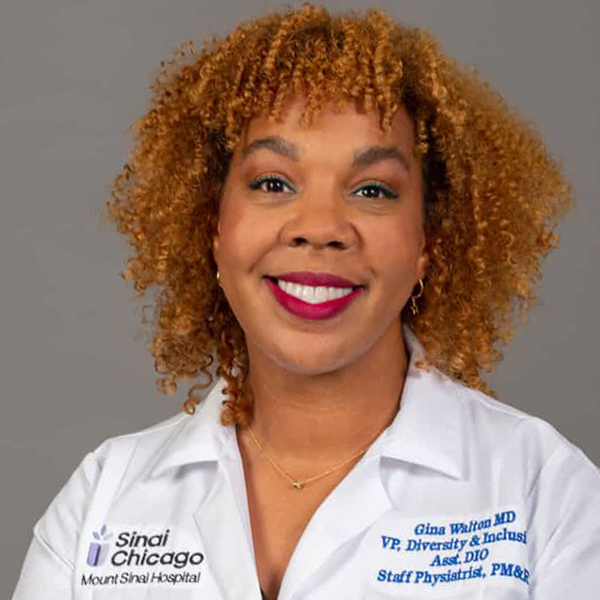
Dr. Walton is a graduate of the UICOM and serves as the VP of Medical Diversity & Inclusion and the Associate Designated Institutional Official for Graduate Medical Education for Sinai Chicago. Dr. Walton is a physiatrist and serves her community through her outpatient Physical Medicine & Rehabilitation clinic at Schwab Rehabilitation Hospital at Sinai Chicago. Additionally, Dr. Walton is responsible for assisting in the support and accreditation of the five residency programs sponsored by Sinai Chicago. Dr. Walton’s pronouns are she/her/ella. Dr. Walton is passionate about improving patient health outcomes through recruitment aimed at increasing physician-patient concordance to ensure that the community is being served by talented clinicians that are equally passionate about serving underserved populations. By building on her experience as an advocate for African American and Hispanic communities in Chicago, Dr. Walton continues to expand her knowledge and seek opportunities to grow her advocacy and support for the LGBTQ+ community, as well. Dr. Walton has extensive experience in coaching and mentoring and is fulfilled by empowering her family, friends, patients, and students with support and tools that help them better participate in their health, growth, and development.
-
Dr. Anna (Ania) Lipowska

Dr. Anna (Ania) Lipowska is an assistant professor in the Department of Medicine’s Division of Gastroenterology and Hepatology. She graduated with a Bachelor of Music in violin performance as well as a degree in sociology from Vanderbilt University in Nashville, TN. She went on to earn her medical degree from Emory University School of Medicine in Atlanta, GA. Dr. Lipowska completed internal medicine residency training at Northwestern University in Chicago and gastroenterology fellowship at the University of Chicago. She is double board-certified in internal medicine and gastroenterology and works in both the inpatient and outpatient settings. Her clinical and research interests include esophageal disorders, endoscopic ergonomics and educational curriculum development.
Dr. Emily Graber
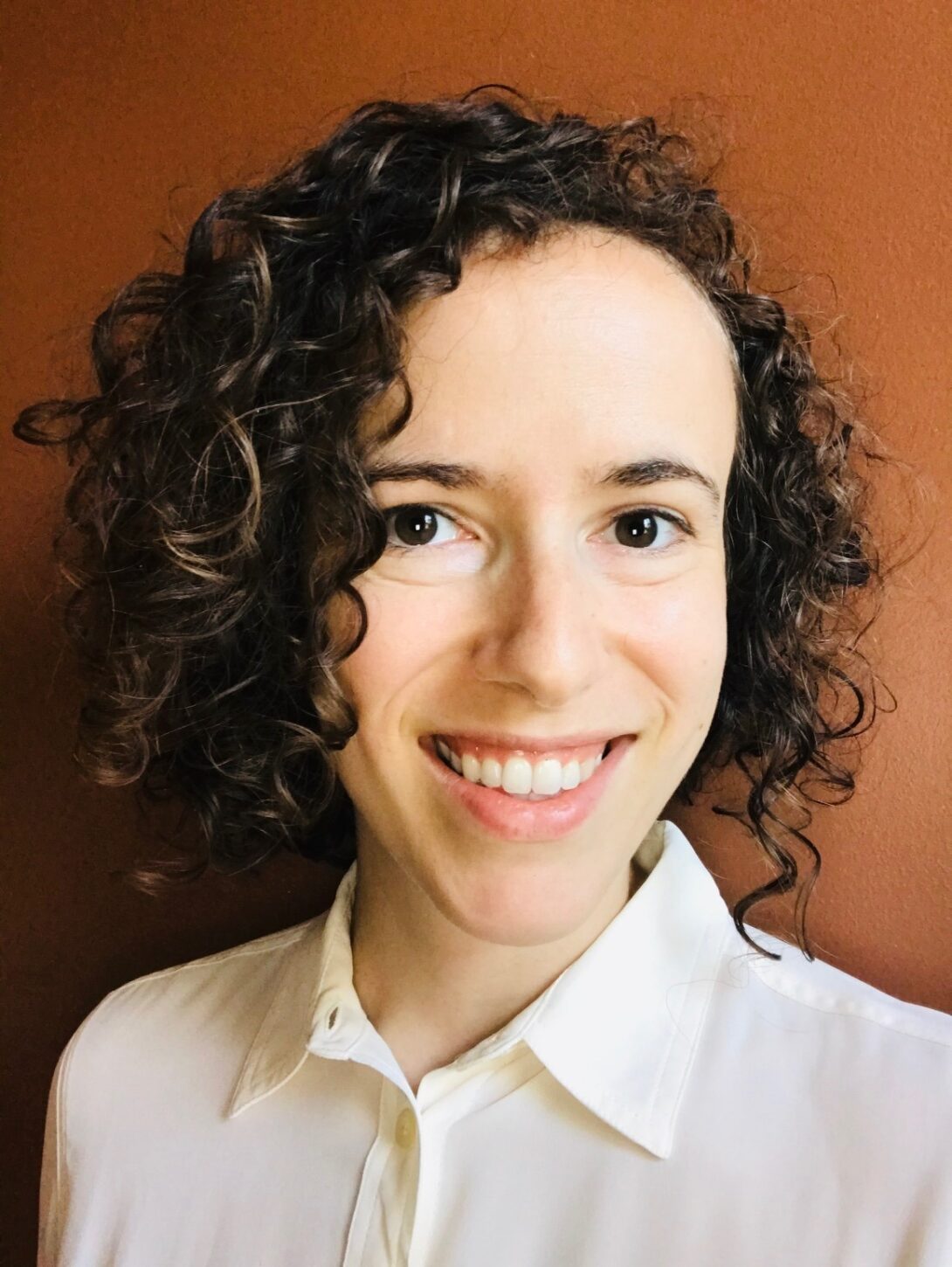
Dr. Emily Graber is an Assistant Professor of Clinical Family Medicine. Originally from Ohio, she came to Chicago for college at the University of Chicago, and came to UIC for medical school and beyond. After completing Family Medicine residency, she completed an Academic Career Fellowship and since then has been working as an attending at the Pilsen Family Health Center. She loves providing primary as well as inpatient care for all ages, with special interests in full-spectrum reproductive (LGBTQ+ inclusive) healthcare, nutrition and lifestyle’s role in chronic disease, and Point of Care Ultrasound. When she’s not at work, you’ll find her on her bike, doing yoga, or growing her own food (and then, of course, cooking and eating it).
-
Dr. Priyanka Gokhale
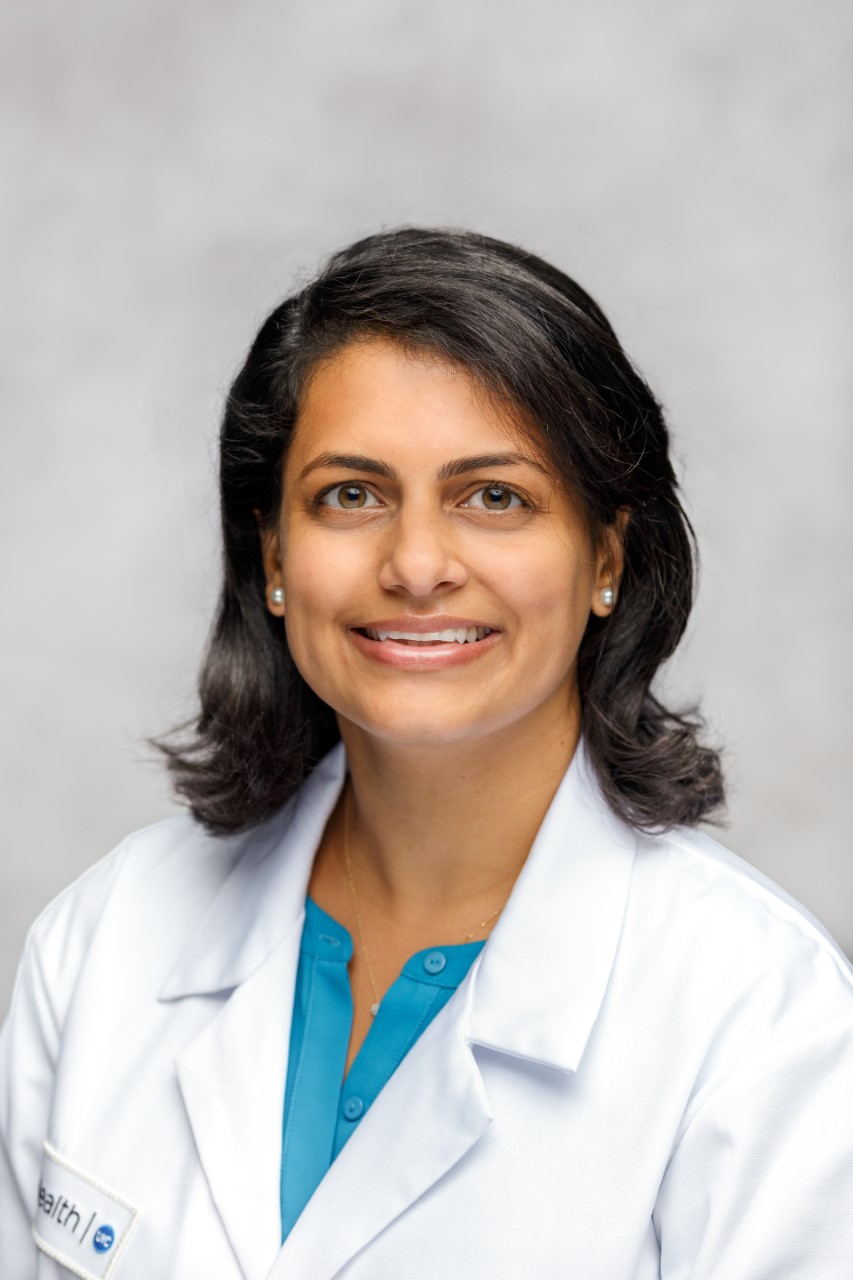
Dr. Priyanka Gokhale is an Assistant Professor of Obstetrics and Gynecology. She is originally from Maryland but has called Chicago home since moving to the city for residency. She completed her training at Northwestern and joined the faculty at UIC shortly thereafter. Dr. Gokhale is committed to medical education and looks forward to working closely with students in her new role as a physician house advisor.
-
Dr. Erin Hickey
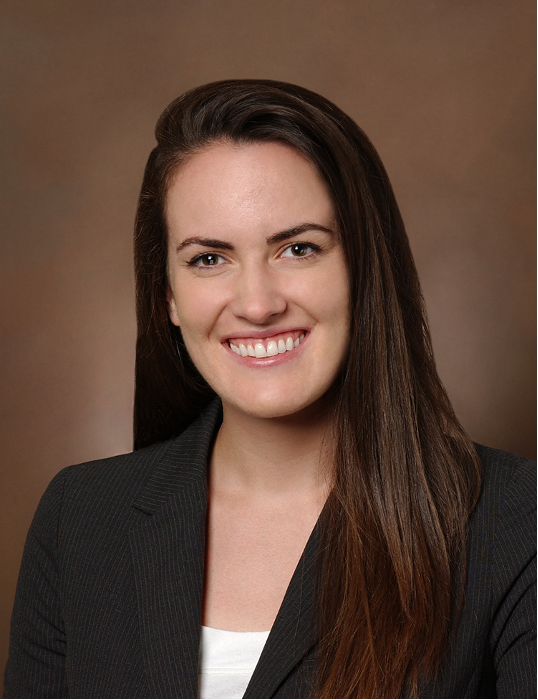
Dr. Erin Hickey is an Internal Medicine and Pediatric (Med-Peds) trained doctor in the division of Academic Internal Medicine. She is from Cincinnati, Ohio and moved to Chicago for college, came back for residency, and joined UIC after residency for a medical education fellowship. She is very excited to stay at UIC after joining as faculty in 2021. Her medical interests are in the primary care of children and adults with intellectual and developmental disabilities, medical education for trainees at all levels, and the treatment of opiate use disorder. Outside of medicine, she enjoys all activities outdoors, especially those she can share with her dog Cooper, and spending as much time as possible with family and friends. She is committed to the well-being and advancement of medical students and is delighted to join the PHA family!
-
Dr. Leelach Rothschild
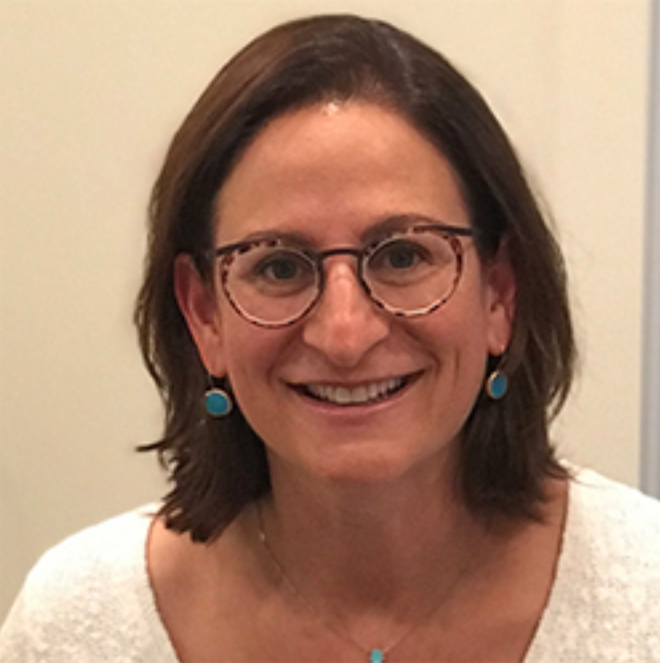
Dr. Leelach Rothschild, MD is an Associate Professor of Anesthesiology at University of Illinois at UIH and splits her time between Shriners Hospital for Children in Chicago and UIH. She grew up in the north suburbs of Chicago and went out east for college where she obtained a BA in Spanish Literature; she developed a fondness for traveling to other countries and learning about other cultures. Upon her return to Chicago, she worked in a Surgical Oncology Lab at UIC and maintained her connection to Spanish through her volunteer work in Pilsen. She went on to receive her MD from the University of Illinois and continued there with her training, completing a residency in Anesthesiology and then fellowship in Pediatric Anesthesiology. She has been a proud lifer at UIH since 2007! (but technically 1997 when she stepped foot into the lab). She is involved in many hospital and department projects, but particularly enjoys supporting residents and department wellness initiatives; she also serves on the Wellness Committee for the American Society of Anesthesiologists. When she is not busy at work, she finds joy spending time with her family, walking and playing with her dog, and when circumstances allow, traveling the globe.
-
Dr. Lauren Williams

Dr. Lauren Williams, MD, MBA, is an assistant professor in the Department of Medicine. She earned her undergraduate degree from Howard University and her medical degree from the University of Virginia. She completed her MedPeds residency at UIC, where she served as chief resident in her fourth year. After working in the Washington, DC area, she returned to UIC. She completed her MBA and is currently the medical director for the OCC IM clinics. Dr. Williams enjoys balancing direct patient care with her administrative role, focusing on enhancing patient and provider experiences in primary care. She is enthusiastic about medical education and excited about mentoring the next generation of physicians. In her free time, she loves spending time with family and friends, trying new culinary experiences, and traveling.
Dr. Matt Witthaus
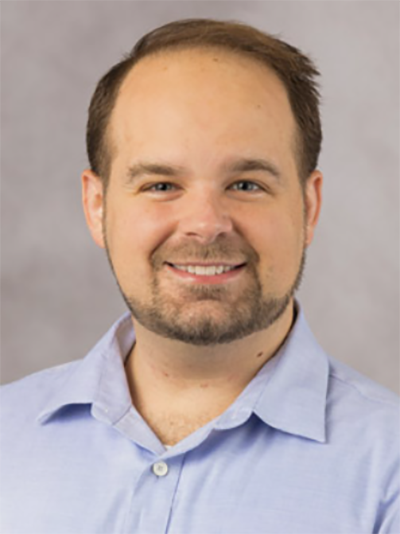
Dr. Matt Witthaus completed medical school at the University of Missouri, residency in family medicine at Saint Louis University, and a fellowship in academic family medicine at Saint Louis University. He has been on faculty at UIC since 2018, and his clinical interests include LGBTQ health, including gender affirming care, as well as behavioral health and chronic disease management. Outside of work, he and his husband enjoy traveling, soaking in the arts, and spending time with friends and family.